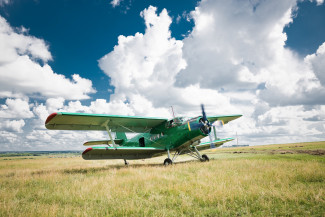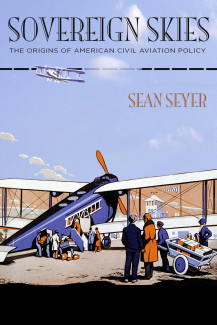
Johns Hopkins UniversityEst. 1876
America’s First Research University
Sovereign Skies: The Origins of American Civil Aviation Policy – Q&A with author Sean Seyer

What is new about Sovereign Skies that sets it apart from other books in the field?
While this is not the first book to address the early development of civil aviation policy in the United States, it is the first to demonstrate the central role that international influences played in that process. The underlying question of government’s relationship to the airplane revolved around its relationship to sovereignty—for the United States this meant determining the division of regulatory authority between individual states and the federal government as well as how American aircraft could safely and effectively operate internationally. By giving both the domestic and the international aspects of the issue equal weight, this book emphasizes the ways in which certain “borderless” technologies can prompt a blending of these two policy spheres. In doing so, it transforms the initial extension of federal control over the atmosphere from a purely domestic tale into a “U.S. in the world” story.
What was the most surprising thing you learned through your writing or research?
I was most surprised by the extent to which those working to establish federal legislation recognized the need for compatibility with the emerging international system established by the 1919 Convention Relating to the Regulation of Aerial Navigation. Whether members of industry such as Samuel S. Bradley of the Manufacturers Aircraft Association and Clement Keys of Curtiss Aeroplane Corporation, William P. MacCracken, Jr., or W. Jefferson Davis of the American Bar Association, or those in the engineering profession like Henry M. Crane and Charles M. Manly, a surprisingly strong consensus emerged among the various interested constituencies on the need for a national regulatory system that would align with the Convention’s postwar air regime despite a lack of official ratification. Within only a few years, advocates of uniform federal control over the airplane took this need for regulatory compatibility as a given, although they needed to tread lightly when selling their ideas to politicians dead set against any connection to the League of Nations.

What do you hope people will take away from Sovereign Skies?
I hope readers take away several key points from this study. First, just as works in the History of Technology have called into question the “genius inventor” narrative, this book demonstrates that the creation of regulatory policy for the airplane—its ideation, spread, and institutionalization into law—occurred as the result of a prolonged discussion among various constituencies and not through the efforts of a single individual. In addition, this book accentuates the various ways that international regulatory regimes influence national discussions, even in the absence of official adherence. In our increasingly interconnected world, an unratified agreement can still have a profound effect on policy, and what seems to be a purely domestic discussion can, in reality, be shaped by international considerations in subtle yet powerful ways. Sovereign Skies shows how certain technologies can both physically and ideologically undermine the presumed division between the domestic and foreign policy spheres. And finally, I hope the book is an enjoyable read that provides historical insights applicable to current debates over the appropriate government response to emerging technologies.
Order Sovereign Skies: The Origins of American Civil Aviation Policy at the following link: https://jhupbooks.press.jhu.edu/title/sovereign-skies
Sean Seyer is an assistant professor at the University of Kansas, where he teaches classes on aviation history and the history of science and technology. He is the author of Sovereign Skies: The Origins of American Civil Aviation Policy.



